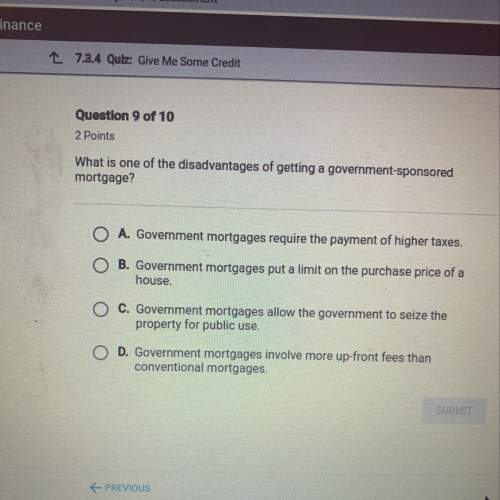
Business, 10.05.2021 16:30, blakeesteigmanoxd9bd
Mutual funds can effectively charge sales fees in one of three ways: front-end load fees, 12b-1 (i. e., annual) fees, or deferred (i. e., back-end) load fees. Assume that the SAS Fund offers its investors the choice of the following sales fee arrangements: (1) a 3% front-end load, (2) a 0.55% annual deduction, or (3) a 1% back-end load, paid at the liquidation of the investor's position. Also, assume that SAS Fund averages NAV growth of 12% per year.
Required:
a. If you start with $100,000 in investment capital, calculate what an investment in SAS would be worth in three years under each of the proposed sales fee schemes. Which scheme would you choose?
b. If your investment horizon were 10 years, would your answer in Part a change? Demonstrate.
c. Explain the relationship between the timing of the sales charge and your investment horizon. In general, if you intend to hold your position for a long time, which fee arrangement would you prefer?

Answers: 3
Other questions on the subject: Business

Business, 21.06.2019 19:30, qiuedhg
Consumer surplus is: the difference between the price of a product and what consumers were willing to pay for the product. the difference between the discounted price of a product and its retail price. the difference between the price paid by consumers and the price required of producers. the difference between the price of a product and consumers' valuation of the last unit of the product purchased.
Answers: 2

Business, 22.06.2019 01:30, ghollins
Suppose the following items were taken from the balance sheet of nike, inc. (all dollars are in millions.) 1. cash $ 2,316.7 7. inventory $ 2,245.6 2. accounts receivable 2,786.2 8. income taxes payable 80.3 3. common stock 2,841.1 9. equipment 1,783.8 4. notes payable 291.2 10. retained earnings 6,162.5 5. buildings 3,959.7 11. accounts payable 2,624.6 6. mortgage payable 1,092.3 perform each of the following. classify each of these items as an asset, liability, or stockholders’ equity, and determine the total dollar amount for each classification. (enter amounts in millions up to 1 decimal place, e. g. 45.5 million.) cash accounts receivable common stock notes payable buildings mortgage payable inventory income taxes payable equipment retained earnings accounts payable assets $ 13092 liability $ 4088.4 stockholders’ equity $ 9003.6 etextbook and media determine nike’s accounting equation by calculating the value of total assets, total liabilities, and total stockholders’ equity. (enter amounts in millions up to 1 decimal place, e. g. 45.5 million.) total assets = total liabilities + total stockholders’ equity
Answers: 3

Business, 22.06.2019 06:10, aj0914
Investment x offers to pay you $5,700 per year for 9 years, whereas investment y offers to pay you $8,300 per year for 5 years. if the discount rate is 6 percent, what is the present value of these cash flows? (do not round intermediate calculations and round your answers to 2 decimal places, e. g., 32.16.) present value investment x $ investment y $ if the discount rate is 16 percent, what is the present value of these cash flows? (do not round intermediate calculations and round your answers to 2 decimal places, e. g., 32.16.) present value investment x $ investment y
Answers: 1

Business, 22.06.2019 17:50, adamflex
Variable rate cd’s = $90 treasury bills = $150 discount loans = $20 treasury notes = $100 fixed rate cds = $160 money market deposit accts. = $140 savings deposits = $90 fed funds borrowing = $40 variable rate mortgage loans $140 demand deposits = $40 primary reserves = $50 fixed rate loans = $210 fed funds lending = $50 equity capital = $120 a. develop a balance sheet from the above data. be sure to divide your balance sheet into rate-sensitive assets and liabilities as we did in class and in the examples. b. perform a standard gap analysis and a duration analysis using the above data if you have a 1.15% decrease in interest rates and an average duration of assets of 5.4 years and an average duration of liabilities of 3.8 years. c. indicate if this bank will remain solvent after the valuation changes. if so, indicate the new level of equity capital after the valuation changes. if not, indicate the amount of the shortage in equity capital.
Answers: 3
Do you know the correct answer?
Mutual funds can effectively charge sales fees in one of three ways: front-end load fees, 12b-1 (i....
Questions in other subjects:



Chemistry, 03.05.2021 21:00

Mathematics, 03.05.2021 21:00

Mathematics, 03.05.2021 21:00


Mathematics, 03.05.2021 21:00










